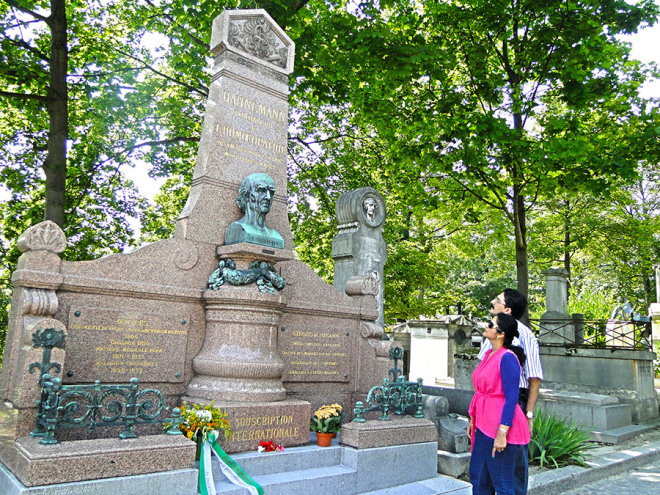
By E. R. McIntyre, M.D.
Many years ago I became interested in the fact that practically all of my patients in whom Aconite was indicated were made sick by some sudden shock to the cutaneous capillaries, as from cold wind, sudden change of temperature, etc. But at that time I was unable to find an explanation that was satisfactory to my own mind. I had some crude ideas on the subject, but was wholly at a loss for anything tangible. I found that all of our authorities on materia medica taught that Aconite produces congestion by acting through the cerebro-spinal nervous system. And I believed this to be true until I learned that this system has absolutely nothing to do with the circulation of the blood. This being true, I could not see how it would be possible to get congestion through its action. But since all vascular action is controlled by the sympathetic system, so-called, congestion must result from some disturbance in this system.
But when we attempt to trace the action of drugs we realize that our provers have all failed to record a very important part of their work, viz., the relative time of appearance of the different symptoms in their provings. And so we have a mass of symptoms thrown together without system, from which we are expected to get what we may, but with no possibility of obtaining the true picture of any drug. However, the first symptom of Aconite seems to be tingling in the ends of the fingers, mouth and throat. This shows that its action begins in the peripheral nerve ends. Later there are indications that deeper structures are involved.
Now if we compare these facts with the course of a case of pneumonia which calls for Aconite, we find that the primary shock was received by the cutaneous capillary vaso-motor nerves (peripheral sympathetic), resulting in their (temporary) spasmodic contraction, which drove the blood from the surface to the internal organs, and later the symptoms of congestion appeared in the thoracic viscera. I have mentioned pneumonia because it illustrates the course of all other diseases calling for Aconite, only differing in the organs involved, and because it is a common condition. In this connection I might say that after the lungs are congested the so-called pneumonia germ can find suitable pabulum for its maintenance and the blood having lost its power of self preservation, the germ can live in the tissues, because they are already diseased. All diseases calling for Aconite have their primary beginning at the periphery of the sympathetic nerves, and extend toward the centers. It is well known that Belladonna is rarely indicated in any of the eruptive fevers except scarlet fever, in which the eruption appears very early. The first symptom of this drug is dryness of the fauces, and the next dilated pupils (peripheral symptoms), and this even when administered by injections. The red face is also peripheral and an early symptom. My experience has been that all diseases in which Belladonna is indicated begin in the periphery, and later show disturbance in the central organs (brain, spinal cord, etc.)
The extreme nausea and vomiting of Ipecac are never forgotten by the victim as the first symptom or manifestation of its action. No one doubts that this results from irritation to the peripheral nerve ends in the mucous membrane of the stomach. The more central and general symptoms appear later, and even “keynote” prescribers recognize this first symptom as a key-note for the administration of Ipecac.
Profuse watery diarrhoea is an early symptom of Podophyllum, the other symptoms coming later. What does this tell us? That Podophyllum begins its action in the Billroth-Meisner plexus (peripheral nerves).
I have selected these four of our most common remedies for acute diseases because their symptoms are so well known. Now let us compare their beginning and the course of their action with four well known chronic remedies, so-called, or, more properly, our deep acting drugs. How different in its origin and course of action from those given above is Arsenicum, whose primary action (except in poisonous doses which corrode the tissues by simple contact), is profound, striking down of the centers of the life forces so that the patient is utterly prostrated. This appears long before the characteristic blood changes and cutaneous affections. When we find an Arsenicum skin trouble we always find a patient who has been “ailing” for a long time, and we never expect quick results because the skin (peripheral nerves) is the last point reached in the action of the drug.
The Calcarea patient always has a history of disturbance in the general nutrition long before the enlarged glands on the surface. He shows profound weakness, abnormal development of the abdomen, deficient lime in the bones and the characteristic “potbellied” appearance, not infrequently from infancy. Late in the course of his trouble the cutaneous symptoms appear.
In silicea we can always find that the patient has long noticed some central disturbance like “weakness and sense of debility” before the external manifestations in the form of boils, suppuration, etc. It may be simply a profound sensitiveness to cold air. But whatever it is it points directly to the ganglionic centers of the sympathetic system as the starting point of disturbed rhythm.
The patient with a sulpur rash has been sick for weeks months or years before the eruption appeared on the skin. I now have a patient with such an eruption, who gives a history of life-long trouble from inherited scrofula (whatever scrofula may mean), who is now about 60 years old. The eruption did not appear until a year or two ago, and he tells me that he never felt so well in his life as he has since it appeared.
What kind of logic would lead us to apply external means to cure such a case? It is the external manifestation of an internal disturbance. Remove the cause and the effect will cease. I do not wish to be misunderstood. I do not condemn such local measures as will relieve some unbearable local irritation or a foreign body from the tissues or the evacuation and cleansing of a pus sack. He who neglects these is as deeply in error as he who by cutting out an enlarged gland or some diseased tissue expects to cure the patient by this alone. When such measures are necessary the patient must always be cured afterwards, by establishing the normal rhythm through the sympathetic nerves and ganlia. A surgical operation can never do that. Neither can medicine if we permit a foreign body to remain in the tissues. No one who knows anything about the importance of the sympathetic nervous system in its relation to the primary cause of disease would think of curing a sick person by any local means alone, whether surgical or otherwise.
Several years ago when I began a systematic study of the sympathetic nerves for the purpose of making some practical use of it in my work, I found that the literature on the subject was exceedingly limited and meagre. About all there was to be found were a few pages of if words in the general works on anatomy with absolutely no practical application. But since that time very creditable works have been written on the subject. And we now know that this system presides over every function of our body not subject to the will; all our involuntary acts controlling the circulation of the blood and lymph, secretion, absorption, assimilation, excretion and every step in nutrition. It is the nerve of rhythmical action in every organ of our body. It is the balance wheel governing the action of the cerebro-spinal system. It extends to every organ and tissue in the human body. It unites every organ and tissue with every organ and other tissue. A disturbed condition in any part of it affects every other tissue. A disturbed condition in any part of it affects every other part. These facts cannot be denied by any one who has studied this system of nerves. When we admit this we are forced to the conclusion that a purely local disease is a physiological impossibility, outside of mechanical injury, which very soon becomes systemic, as is well known by all who have noted the rise in temperature, etc., and as we compare the symptoms and course of acute and chronic diseases, so-called, with the physiology of the sympathetic nerves we can hardly fail to see that they are the results of agencies whose action begins in very different parts of this system, and whose disturbance extends in different directions over it. The first disturbance in all acute diseases is at some point at the peripheral extremities of the sympathetic (the ganglia being understood as central, and the nerve fibres peripheral), and extends towards the central ganglia, while all chronic diseases have their first disturbance in some of the central ganglia, and extend toward the periphery.
In order for a remedy to be strictly homoeopathic to any disease, it must begin its action where the disorder or sickness for which it is given began, and extend in the same direction, involving the same tissues in the same tissues in the same relative order, and be capable of producing in the healthy a similar disturbance of rhythm or departure from health.
All remedies indicated in chronic diseases must begin their action in the ganglionic centers. All remedies indicated in purely acute diseases must begin their action at the periphery of these nerves.
At first sight these seem broad statements. And outside of those who not only believe in the law of similars, but who know something of the sympathetic nerves, they will probably not be believed. But I only ask them to prove that my position is erroneous.




